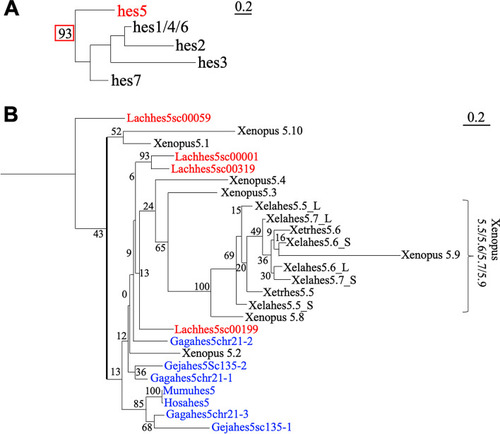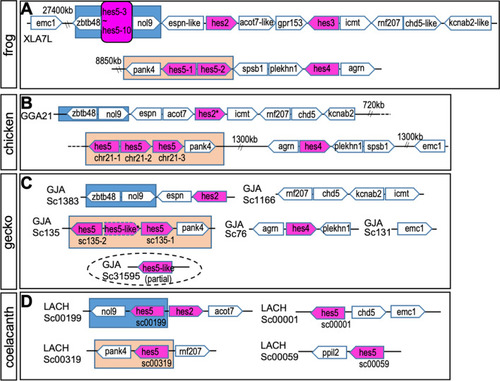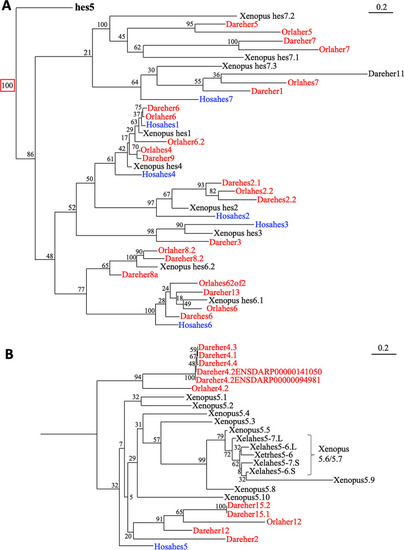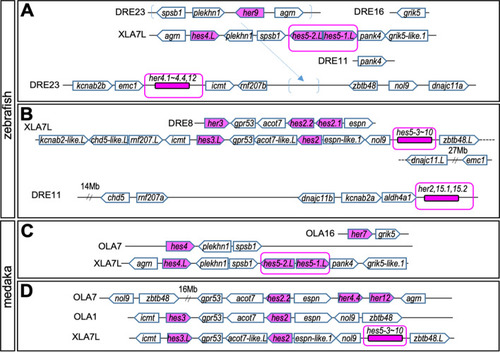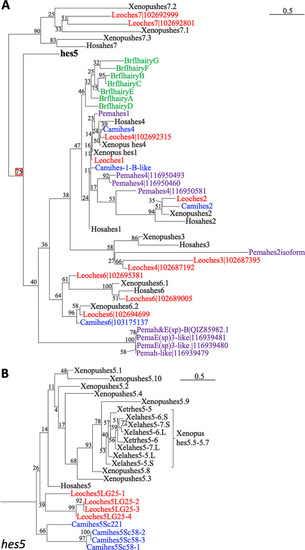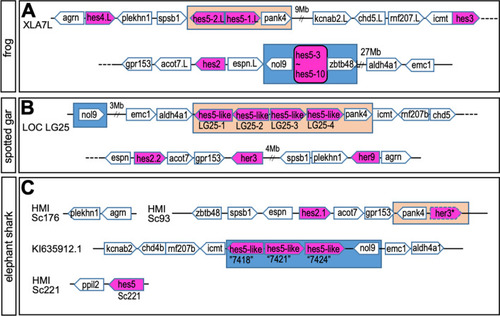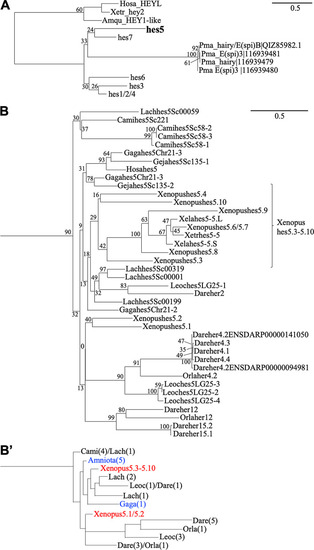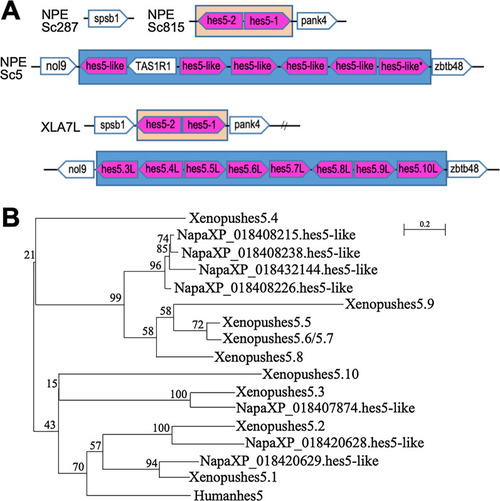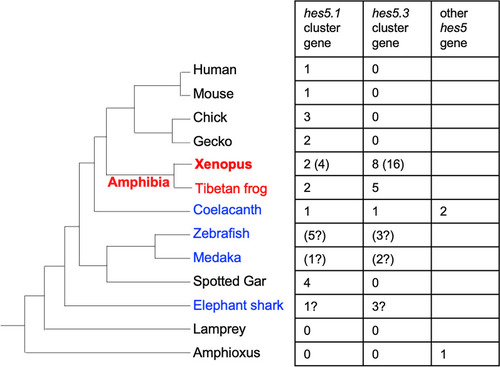- Title
-
Evolution of hes gene family in vertebrates: the hes5 cluster genes have specifically increased in frogs
- Authors
- Kuretani, A., Yamamoto, T., Taira, M., Michiue, T.
- Source
- Full text @ BMC Ecol Evol
|
Phylogenetic analysis of |
|
Syntenic analysis of |
|
Phylogenetic analysis of teleost |
|
Comparison with |
|
Phylogenetic analysis of |
|
Comparison with |
|
Comprehensive phylogenetic analysis of |
|
Syntenic and phylogenetic analysis of Tibetan frog |
|
Evolutionary acquisition of |

